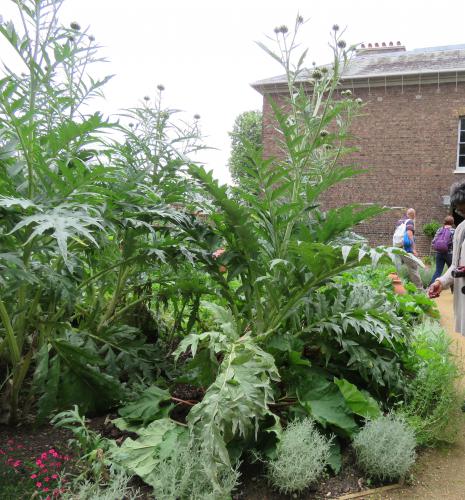Artichokes have more to offer than you realize
The health benefits of artichokes go way beyond the dinner table.

Many of us are familiar with eating artichokes in dips and other dishes during the holidays. Artichokes are a great addition to our diet because they contain fiber, folate, iron, magnesium, and vitamin K, which are all nutrients that have important health benefits. Artichokes also contain high levels of antioxidants (namely vitamin C). Antioxidants are beneficial to human health because they can help prevent the formation of free radicals. Free radicals are molecules that develop in animals (including humans) and, at high concentrations, can lead to cancer and other health conditions. The levels of antioxidants in artichokes can help reduce those risks of cancer and disease.
Since consumption of artichokes is healthy for your body, why not eat them throughout the entire year? Besides holiday dips, there are many other ways to cook artichokes. In summer, you can even grow your own artichokes, which can add additional benefits to both you and your landscape, as described below.
The benefits of growing artichokes at home
Artichokes grow on perennial plants (Cynara scolymus) that are native to southern Europe, North Africa and the Canary Islands; however, they can also be grown in the USA, including northern climates (if treated as an annual). There are two main types of artichokes: globe and elongated. As the names suggest, globe artichokes are rounder in shape and elongated artichokes are longer. Varieties of globe artichokes include “Green Globe”, “Imperial Star” and “Tempo”. A popular elongated artichoke is “Violetto”, which is an Italian heirloom. All of these varieties can be started by seed or purchased as transplants from a plant nursery. Artichokes grown in from seed will need an indoor head start of eight weeks. It is easy to grow artichokes since they have similar planting instructions and growing requirements as other vegetables.

The British have been using artichoke plants in their gardens not only for food but for plant architectural and beautification purposes. Kew Botanical Gardens, London, UK. Photo credit: Sarah Rautio
The wonderful thing about artichokes is that their benefits do not stop with nutrition. Many countries in the world have begun to plant artichoke plants in flower beds because they bring structural interest, increase the variety of plants (which is healthy for the environment), and add beauty to the garden with their attractive silver foliage. Under the right conditions, artichoke plants can grow quite tall, and they produce giant purple flowers with flat “landing platforms”, thereby making them one of the best plants to support pollinators, such as bees.
As with many plants, people who plant them, nurture them, admire them, and harvest them can also obtain physical and mental benefits via moderate exercise routines, focused thinking, and feelings of accomplishment, all of which reduce stress levels. These are often the benefits that are overlooked when we think of how plants benefit our lives.
For additional resources on healthy vegetables and fruits that can be grown and harvested in Michigan, visit the Michigan Fresh. For more information on gardening in Michigan, visit the Gardening in Michigan. For more information on supporting pollinators, visit Pollinators and Pollination.



 Print
Print Email
Email




